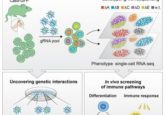Poor sleep? Blame evolution

It has long been hypothesized that REM sleep and the stress response are linked, until now the mechanism has been unknown and might shed light on some mood disorder treatments.
Everybody hurts after a bad nights’ sleep, but the Nightmare on Elm Street nursery rhyme about fear and getting some shut eye might have been closer to the truth than the writers suspected. A study by researchers at the Shenzhen Institute of Advanced Technology (Shenzhen, China) shows why. Unlike the raisin-faced slasher antagonist, this discovery could stop you from losing your religion over a spasmodic snooze.
Most commonly associated with dreams, rapid eye movement (REM) sleep begins roughly an hour and a half after falling asleep and lasts for ten minutes. REM alternates with non-rapid eye movement (NREM) sleep in progressively longer intervals. During REM sleep brain activity, blood pressure, pulse speed and breathing rate all increase. Your eyes also dart around in their sockets like you’re playing pinball. NREM is a deeper sleep by comparison and is associated with body repair, growth and strengthening of the immune system.
The research team, led by Wang Liping, hunted down the neural mechanisms behind the curious theory linking fear and REM sleep. In an experiment, animals were sealed in chambers and exposed to trimethylthiazoline (TMT) odor while they slept. TMT odor alerts animals to the presence of a predator. They then studied the medial subthalamic nucleus – the part of the brain home to a high volume of corticotropin-releasing hormone neurons, which controls the release of adrenocorticotropic hormone. This hormone influences the production of cortisol, which, amongst other things, affects the stress response.
 Jogging your memory: it’s more literal than you’d think
Jogging your memory: it’s more literal than you’d think
Research finds that elderly people who exercised more often exhibited signs of healthier nerve transmission, which may prevent cognitive decline.
The team discovered an underlying circuit common to the regulation of both REM sleep and innate fear. This combination of neurons lowers the REM sleep arousal threshold and increased the post-waking defensive response – which, as you might expect, helps respond to potential danger. Perhaps more interesting was the discovery that sustained exposure to predator-related stress resulted in a significant increase in total time devoted to REM sleep, broken into shorter bursts, fragmenting the sleep architecture.
Wang observed, “TMT triggered rapid arousal from REM sleep but not from NREM sleep. This suggests that REM sleep has specific properties that allow rapid arousal in response to predatory stimuli.”
The parallels between increases in REM sleep and mood disorders have been indicated in previous clinical studies, and the new results go some way towards explaining the evolution-derived neurobiological mechanisms behind these correlations. Their study, published in Neuron, offers a fascinating insight into the effects of two distinct functions sharing the same neuronal network and raises questions around possible mood disorder treatments by manipulating this fear-sleep crossover.
“We may hypothesize that natural selection favors optimizing existing neural circuitry for efficiency in signal transduction and energy usage over metabolically more expensive solutions,” Wang explained.





